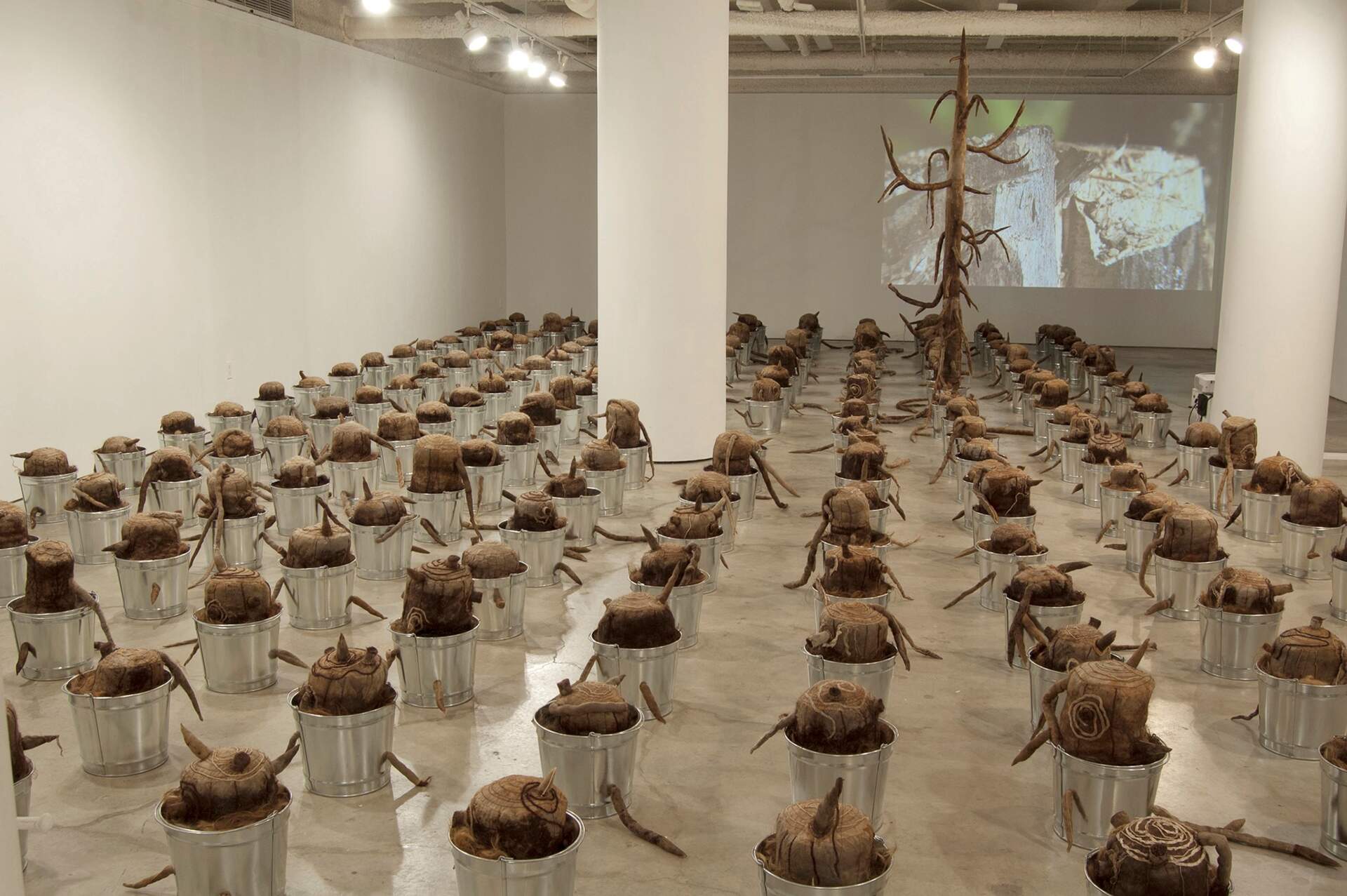
The Last Tree - Babs Reingold
Past
Sep 9, 2016 - Feb 26, 2017
The Last Tree, an installation by artist Babs Reingold takes on social issues within the context of environment, beauty, and poverty. As the artist states:
“Growing up, my family frequently moved, country-to-country, dwelling-to-dwelling, including a stay in public housing. I was unable to save few if any of the things I cherished. This fostered a need to create my own reality with my own objects, however temporary.
Constructing installations verifies existence; validates the “who” of whom I am.
The destruction and ensuing poverty caused by Katrina, then hearing Jared Diamond and his description of the infamous Easter Island devastation, inspired this installation. I am fascinated by man’s greed and lack of foresight that, in turn, causes his ultimate demise; self-absorption to self-destruction.
It was this thinking -- survival versus extinction, whether in environment, beauty, poverty, -- that helped turn me from painting to owning space with installations. This challenge inspires the work, just as does the day-to-day delight of working with my hands and with various materials. Time is still another factor. The two-plus years in the making of The Last Tree speaks to the physical manifestation of time, and in itself rewards the effort.”
The use of hair in her work, is one of her many signatures, both in the real (DNA), but also as a material that she returns to again and again. She continues her description of The Last Tree:
“Hair is a signature in my work for its intrinsic links to DNA and its endearing symbolism. Scarred and stitched textures, transformed from the silk organza I stain, metaphorically mimic surfaces, whether ours or natures. The organza-clad stumps and roots in this installation are stuffed with human hair, a symbiotic link to hair living beyond death, and a collective binder for mortality.
In the installation, the world’s recognized countries, 193 in total, are symbolized in a like number of fabricated stumps encircled in fabric roots. A lone last tree, isolated and stark, rises in the desolate plain of barrenness. The video looms above this graveyard, portending of what will be. Its rhythmic chopping is mesmeric in its meter and enhanced by the sound track created by Lin Culbertson. The Last Tree speaks to a holocaust of sorts, humans destroying a vital part of themselves. Curator Midori Yoshimoto states the work is “a cautionary requiem for humanity.”
The final question to me as an artist was one of purity. In my pondering, I asked: “How do I flay the complexity of complex environmental issues without preaching?” I hope The Last Tree with its allusion to the collapse of societies articulated by Mr. Diamond communicates this intricacy.”